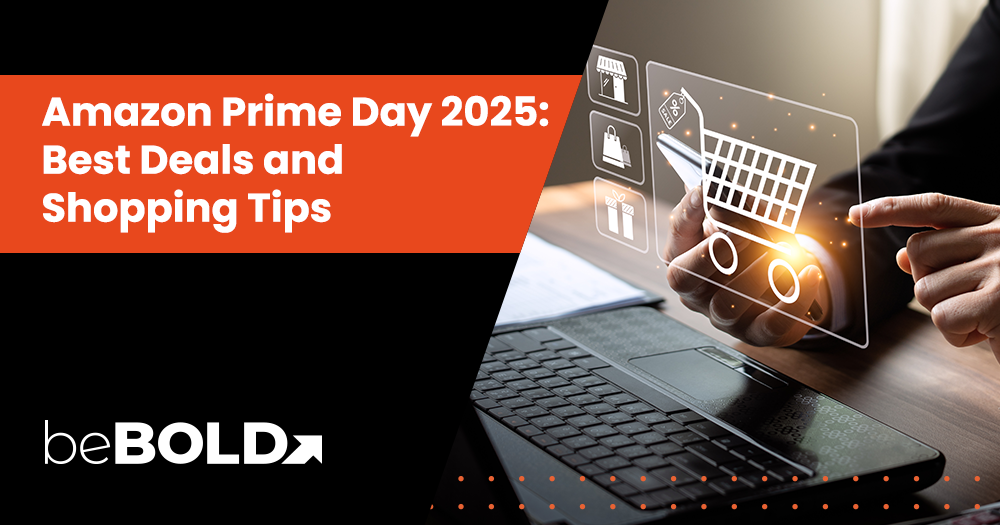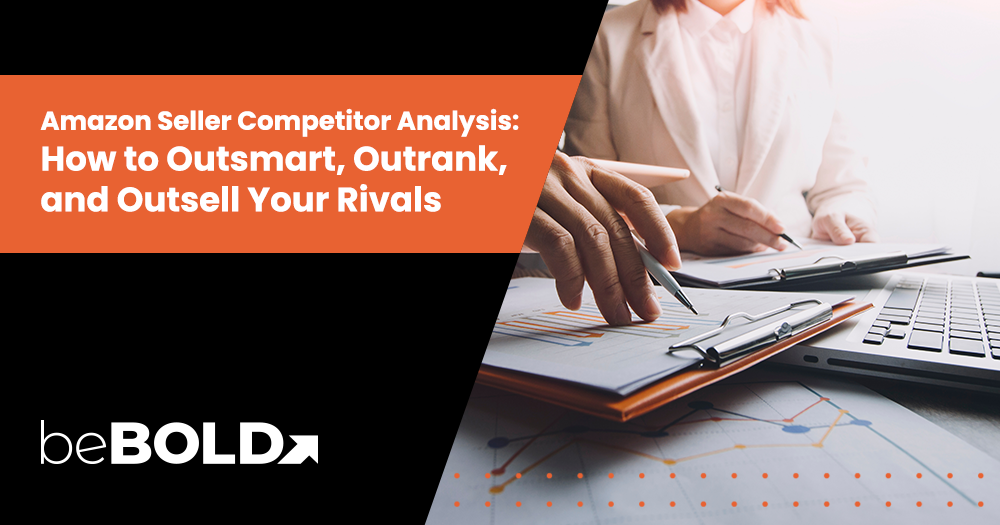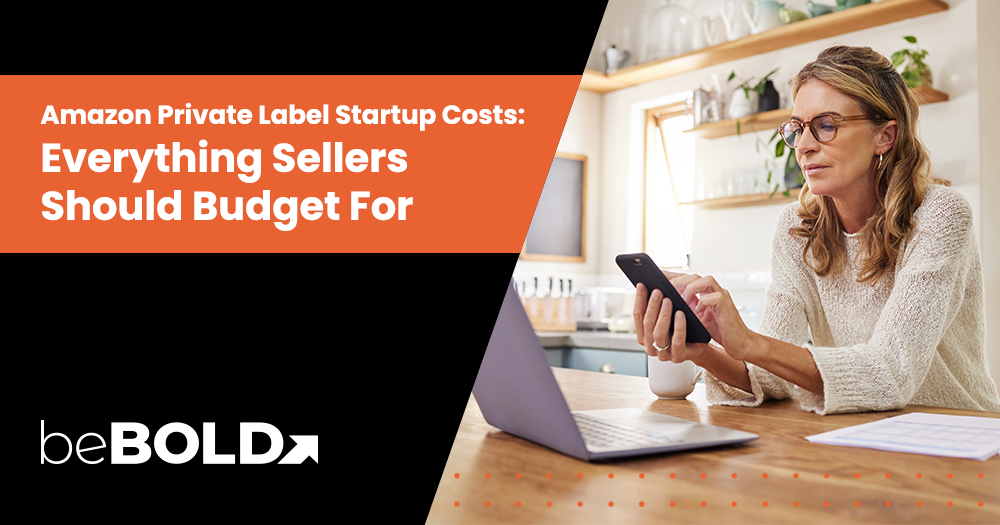Key Takeaways
- Amazon Prime Day 2025 is expected to take place on July 15–16, offering major buying opportunities for both consumers and sellers. 🗓️
- Shoppers can expect deep discounts across electronics, beauty, home, pet, and wellness categories. 🛒
- Lightning Deals and invite-only offers create a high-urgency environment; be ready to act quickly. ⚡
- Sellers should prepare early by optimizing listings, running targeted ads, and submitting deals in advance. 📦
- Post-event, focus on measuring campaign performance and retargeting missed opportunities to maximize ROI. 📈

What Is Amazon Prime Day?
Amazon Prime Day is Amazon’s signature sales event created to reward Prime members and drive summer revenue. Originally launched in 2015 to celebrate Amazon’s birthday, it has since evolved into a two-day global discount fest rivaling Black Friday and Cyber Monday in both traffic and sales volume.
Whether you're a Prime subscriber hunting for the best discounts or an eCommerce brand planning to capitalize, Prime Day is no longer optional—it's essential.
Amazon Prime Day Explained: History, Perks & Scale
The Origins of Prime Day
Amazon Prime Day was launched in 2015 to commemorate Amazon’s 20th anniversary. Initially introduced as a 1-day event, it aimed to boost mid-summer sales during a traditionally slower retail season. Over the years, it has rapidly expanded into a 48-hour global sale, often accompanied by international events and additional promotions, such as "Prime Big Deal Days." Exclusively available to Amazon Prime members, the event not only rewards existing subscribers but also drives new sign-ups with its promise of high-value, members-only deals.
Why Prime Day Matters for Amazon Sellers

For sellers, Amazon Prime Day isn’t just about participating in a sales event—it’s a strategic opportunity to drive exponential growth. Here’s how sellers can benefit from Prime Day:
- Generates a massive spike in traffic across the platform, allowing products to gain exposure well beyond paid ads.
- An ideal window to build review velocity, which plays a critical role in future conversions and organic rank.
- Helps sellers boost Best Seller Rank (BSR) by concentrating sales in a short window.
- Works across both Seller Central (third-party) and Vendor Central (first-party) ecosystems, giving all business types room to compete.
- Many sellers use Prime Day as a launchpad for introducing new products or implementing liquidation strategies.
Why It’s Important for Shoppers

Amazon Prime Day isn’t just a major sales event for sellers; it’s a shopping phenomenon that consumers eagerly anticipate every year. From smart home upgrades to personal care splurges, Prime Day represents a time-limited opportunity to snag high-demand products at prices rarely seen elsewhere. It's an experience driven by urgency, exclusivity, and surprise, especially for Prime members.
- Offers deep, time-limited discounts on popular categories like electronics, smart home, beauty, and household goods, often rivaling Black Friday pricing.
- Lightning Deals and invite-only deals create urgency and exclusivity, making it feel like a real-time competition to score the best bargains.
- For many shoppers, it's the unofficial start of holiday gift shopping, allowing early birds to secure big-ticket items without waiting for Q4 events.
- Prime Day also features exclusive product launches, special-edition bundles, and member-only promotions that are unavailable at any other time of year.
Whether you're bargain-hunting or brand-finding, Prime Day offers more than discounts—it offers discovery, convenience, and the thrill of timing your perfect buy.
When Is Amazon Prime Day 2025?
While Amazon hasn't released official dates, Prime Day has consistently landed in mid-July for the past few years. Based on recent patterns and Prime-exclusive announcements, 2025 is expected to follow the same trend. Amazon typically confirms the exact dates a few weeks prior, but brands and shoppers can start preparing now by reviewing past Prime Day timing.
|
Year |
Prime Day Dates |
|
2023 |
July 11-12 |
|
2024 |
July 16-17 |
|
2025 |
Likely July 15-16 |
What Kind of Deals Can You Expect in 2025?
Anticipated Prime Day Top Categories for 2025
Every year, certain product categories dominate Prime Day, both in terms of customer demand and deal depth. Brands operating in these verticals should be particularly strategic about their listings, promotions, and ad placement to maximize visibility and conversions.
Beauty & Skincare

From luxury serums to everyday essentials, this category thrives with bundling, influencer tie-ins, and limited-edition packaging. During Amazon Prime Day, Beauty and Skincare products typically see savings ranging from 20% to 40%, with some deals, especially bundles and limited-time Lightning Deals, offering discounts of up to 50% or more. High-profile brands like CeraVe, L’Oréal, and Neutrogena often participate with exclusive kits, Prime-only bundles, or tiered offers that reward bulk purchasing.
Pet Products

Prime Day is a popular time for pet parents to stock up on food, toys, grooming supplies, and health-related items, often in multi-pack or subscription form. Shoppers can expect pet products to be discounted by 20% to 45%, with some Lightning Deals and bundles offering savings of up to 55% on select items.
Popular deal formats include:
- Buy-One-Get-One (BOGO) offers on pet food and treats
- Subscription discounts (e.g., 30% off your first Subscribe & Save order)
- Bundles that combine grooming kits, supplements, and toys at 40–50% off
- Limited-time deals on premium brands like Blue Buffalo, Greenies, and Furbo
Electronics & Smart Home Devices

If you're eyeing tech upgrades, Prime Day is the perfect time to make a move. Electronics and smart home gadgets usually see some of the biggest markdowns of the year. You’ll often find 25% to 50% off top brands, think headphones, tablets, and home security systems. And when it comes to Amazon’s own devices like Echo speakers, Fire TVs, and Ring cameras, the discounts can hit 60–70% off. Just a heads up: these deals move fast, so setting alerts and shopping early can make all the difference.
Home & Kitchen

You’ll usually see 20% to 45% off across the Home and Kitchen category during Prime Day, and some of the hottest items—like air fryers, robot vacuums, blenders, and cookware sets—can hit 50% off or more. Big-name brands like Instant Pot, Shark, and Ninja tend to lead the charge with standout deals, so it’s a great chance to score high-quality gear without paying full price.
Medical & Wellness Gear

Looking to upgrade your wellness routine? Prime Day is a great time to do it. You can usually find 20% to 40% off across the Medical & Wellness Gear category, with some products—like massage guns, fitness trackers, posture correctors, and sleep aids—going for up to 50% off or more. Brands like Theragun, Fitbit, and RENPHO often offer big discounts, so keep an eye out for them!
Tools to Track & Compare Deals During Prime Day
Keeping up with the pace of Prime Day can be overwhelming, especially when deals are released in rapid succession and some discounts are time-locked or invite-only. Fortunately, several tools and strategies can help you stay ahead, compare pricing trends, and make informed purchase or advertising decisions.
- CamelCamelCamel for historical price tracking — See how a product's current deal compares to its pricing history to judge true value.
- Chrome Extensions like Honey or Keepa — These tools can automatically alert you to price drops and compare sellers.
- Bookmark high-interest SKUs and subscribe to alerts — Create a wishlist and set up notifications to avoid missing out on limited-time offers.
- Use Alexa or the Amazon app — These platforms often highlight personalized or exclusive deals for Prime members.
Whether you're a shopper hunting for the best bargains or a seller scouting the competition, these tools ensure you're not missing key opportunities.
Expert Tips: How Sellers Can Prepare for Prime Day

Planning ahead is one of the most overlooked Prime Day success factors. Without early preparation, even the best campaigns can be derailed by stockouts, missed ad windows, or delays in promotional approvals. Sellers should treat Prime Day like a product launch: mapping out, resourcing, and executing it on a precise timeline.
To make the most of Amazon Prime Day, sellers must begin preparing well in advance. Hitting key operational milestones ensures that your products are visible, well-stocked, and ready to convert when traffic spikes. Below are the critical dates to build into your campaign calendar:
- Late May: Launch Amazon PPC and DSP campaigns — Give your ad campaigns enough lead time to ramp up, gather data, and optimize before Prime Day arrives. Early launches also help drive ranking momentum leading into the event. Increase your bids on some of the high-performing SKUs leading up to the event.
- Early June: Finalize inventory — Ensure your FBA stock levels are accurate and shipments are already in transit. Waiting too long can lead to stockouts or delayed check-in times. Refresh product images to meet mobile-first standards. Use Amazon A+ Content Design to showcase benefits. Audit SEO with Keyword-rich backend terms.
- Mid-June: Submit Lightning Deals or Coupons — This is typically the last call for getting promotional deals into Amazon’s editorial calendar. Missing this deadline can drastically limit visibility.
Post-Prime Day Strategy for Brands
Prime Day may only last 48 hours, but its impact—and your opportunity to capitalize—extends far beyond the sale itself. Brands that succeed long-term don’t stop once the rush ends; they pivot quickly to evaluate performance, re-engage potential buyers, and capitalize on the momentum with targeted follow-up campaigns.
What to Measure After the Dust Settles

After Prime Day, data becomes your most valuable asset. A well-executed campaign should not only drive revenue but also reveal actionable insights that inform future strategies. Reviewing campaign performance helps you understand which tactics delivered ROI and which areas require refinement.
- Track ROAS (Return on Ad Spend) by campaign type (e.g., Sponsored Products vs. DSP) to understand how each contributed to sales. Look beyond revenue to gauge profitability.
- Analyze session increases, conversion rates, and ACoS (Advertising Cost of Sales) to assess how efficiently you turned traffic into paying customers. A high session count with a low conversion rate could signal listing issues.
- Benchmark results against your performance from Prime Day 2024 or similar seasonal campaigns. This year-over-year perspective helps you evaluate growth trends, shifts in customer behavior, and the impact of new ad strategies or product updates.
- Don’t overlook ancillary data such as click-through rates (CTR), new-to-brand customer rates, and total impressions—these often reveal brand awareness improvements even when direct sales stay flat.
Retarget Shoppers Who Didn’t Convert
Plenty of shoppers browsed but didn’t buy—yet. These are high-intent users who showed interest but didn’t make it to checkout, making them ideal candidates for post-event engagement. Retargeting lets you capitalize on the visibility your listings already earned, turning traffic into delayed conversions.
- Set up DSP or Sponsored Display campaigns targeting non-converters: Use behavioral data from Prime Day to create audience segments for retargeting across Amazon and third-party websites.
- Run follow-up deals and coupon promotions for users with abandoned carts: A limited-time offer can be the nudge that turns a passive browser into a buyer.
- Layer in audience refinements like Prime members, mobile users, or specific product viewers to narrow the focus: This ensures your ads are reaching the most qualified segments, improving ROAS and engagement rates.
- Test sequential messaging or carousel ads that reintroduce products with urgency: Highlight limited stock, new reviews, or price drop notifications to reactivate interest.
Ready to Win Prime Day?
Don’t go into Prime Day without a strategy. This mid-year retail event can be a turning point for eCommerce brands—if approached correctly. From planning inventory and launching ads to analyzing post-event performance, Prime Day is a chance to outperform your competitors and accelerate your growth trajectory. Partner with BeBold Digital to boost your product visibility, fine-tune your ad spend, and unlock the full potential of Amazon Prime Day with expert-backed strategy and execution. Schedule a call with us today and learn how to boost sales, especially during Prime Day!
Frequently Asked Questions (FAQs)
What is Amazon Prime Day?
A two-day sales event exclusive to Amazon Prime members, offering deep discounts on popular products across nearly every category.
When is the next Amazon Prime Day?
Expected around July 15-16, 2025.
Who qualifies for Prime Day deals?
Only Amazon Prime members, although some early deals may be visible to all shoppers.
What categories have the best Prime Day deals?
Tech, beauty, home, and pet products are top-performing categories.
Is Prime Day good for small businesses?
Yes. With strong product listings and well-timed campaigns, smaller brands can gain massive traction.
How can I prepare for Prime Day as a seller?
Start by optimizing your listings, securing inventory early, and launching ads 2–4 weeks in advance to build momentum.
Are there early access deals before Prime Day?
Yes. Amazon often launches early deals and invite-only offers in the weeks leading up to Prime Day, especially for Prime members.
Can I shop Prime Day deals without a Prime membership?
Typically, no. Most deals are locked behind Prime membership, though a free trial may grant temporary access.
How long do Prime Day deals last?
Deals may last anywhere from a few hours (Lightning Deals) to the full 48-hour event, but inventory limits mean many end early.
Will there be another Prime event later in the year?
Amazon often hosts a second major sales event in Q4, such as "Prime Big Deal Days" in October or November.









Comments